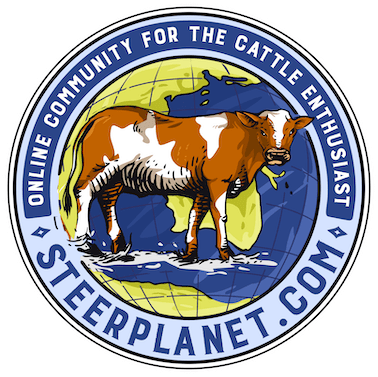Yeah DLD I think you may be right. Also JS it is ironic - I certainly don't tag dead calves but maybe that was the only way to identify the dam amongst a bunch of deformed calves

Few more pictures - it is clear that the one calf required a fetotomy to be delivered
more info from Dr Dehnholm of Oz
Most cases are stillborn, but occasional BHAMC affected calves are born alive. All have arthrogryposis or fixation of the leg joints, usually with fixed flexion of the forelimbs and fixed extension of the hindlimbs as shown in Dr Steffen's photos. Most cases have severe kyphoscoliosis (twisting of the thoracic and lumbar spine), torticollis (twisting of the neck) and a marked lack of muscle development, leading to a bodyweight about half normal (about 15 to 20 kg). Most are full-term calves with erupted teeth, open eyelids etc. Some cases also have palatoschisis (cleft palate), as reported in Charolais calves in Canada with heritable congenital arthrogryposis. He has tracked this recessive defect in pedigrees back as far as a particular bull born in the southern USA in 1979. There are at least two lines of descent from this bull that carry the defective allele, but one of these lines is not a common line. The other line however is very common. The main suspect carrier in Australia has 10,000 registered progeny. His sire is also a suspect carrier and has several thousand progeny and several US bred sons in s current and recent semen catalogues. I believe there will be thousands of carriers in Australia and more in the USA.So you might ask why is it that this syndrome has not been reported before. The reason is that these arthrogrypotic calves look like calves deformed as a result of intrauterine infection with one of the teratogenic Bunyamviruses such as Akabane virus (Australia) or Cache Valley virus (USA) which cause arthrogryposis and hydranencephaly. Only a careful post-mortem examinination will detect the difference. We have had numerous cases of suspect Akabane disease reported here over the last few years that were negative for Akabane antibodies or virus. This syndrome will likely be more important than Fawn Calf Syndrome, not only because it is lethal, but also because the affected bloodlines are more prevalent. Most Angus breeders in Australia are likely to e affected by this disease and most Angus breeders in North America will probably also be affected.
Finally, this syndrome of arthrogryposis, kyphoscoliosis and palatoschisis has also been reported in Hereford cattle (by Leipold from Kansas University in 1974). It probably occurs in many Bos taurus breeds and has been reported in Angus, Charolais and Herefords since the 1970's.




